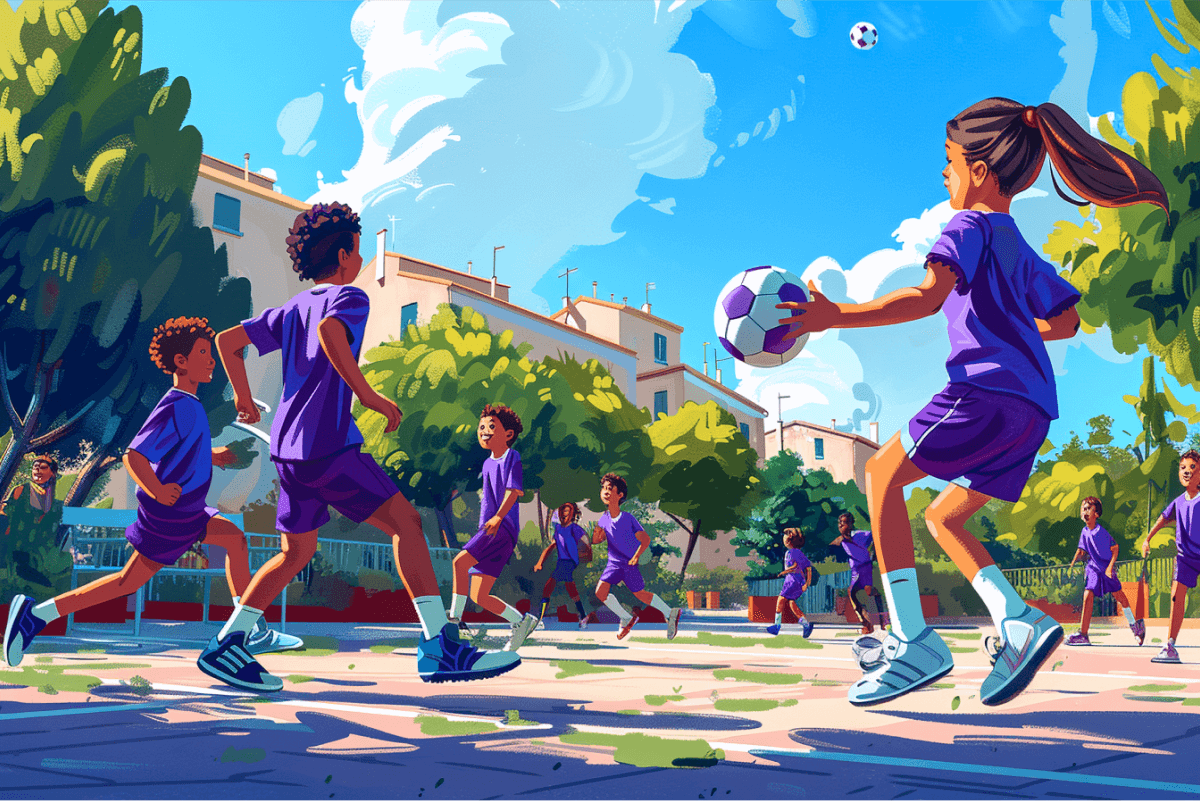Heading back to school after a long summer break can be a mix of excitement and anxiety for elementary school students. To ease this transition and make the return to the classroom a fun experience, engaging in back to school activities is essential. These activities not only help build excitement for the new school year but also provide opportunities for students to refresh their learning skills, foster friendships, and engage in physical activities. In this article, we will explore a variety of fun back to school activities for elementary students.
Understanding the Importance of Back to School Activities
Back to school activities play a vital role in setting the tone for the upcoming academic year. They help create a positive and welcoming environment for students, fostering a sense of belonging and community. By actively participating in these activities, students develop important social and academic skills, making the learning process enjoyable and meaningful.
Building Excitement for the New School Year
One of the primary purposes of back to school activities is to generate excitement among students. To accomplish this, teachers can organize a classroom decoration project where students contribute to making the space visually appealing. Through this hands-on activity, students develop a sense of ownership and pride in their learning environment.
Imagine the joy on their faces as they collaborate with their classmates to create colorful and engaging displays that reflect their unique personalities. The walls adorned with their artwork and creative projects serve as a constant reminder of the exciting journey they are about to embark on.
Additionally, hosting an introductory session where students share their summer experiences can create a sense of camaraderie. Such discussions not only help students connect with their peers but also provide an opportunity for them to practice their communication and listening skills.
As students eagerly share stories of their summer adventures, they not only learn about each other’s interests and hobbies but also develop empathy and understanding. These conversations lay the foundation for a supportive and inclusive classroom environment, where every student feels valued and heard.
Easing the Transition from Summer to School
Transitioning from the freedom of summer vacation to the structured routine of school can be challenging for students. Back to school activities can help ease this transition by providing a gradual shift from leisure to academics. Teachers can plan engaging icebreaker activities that allow students to get to know each other and build a sense of community. These activities can include name games, team-building exercises, or creative writing prompts that encourage self-expression.
Imagine the laughter and excitement filling the classroom as students participate in icebreaker activities, forming new friendships and strengthening existing ones. These activities not only help students feel more comfortable in their new academic setting, but they also foster a supportive network of peers who can provide encouragement and assistance throughout the school year.
Furthermore, creative writing prompts can serve as an outlet for students to express their thoughts and emotions as they navigate the transition from summer to school. Through writing, students can explore their hopes, fears, and aspirations, gaining a deeper understanding of themselves and their goals for the upcoming year.
As we reflect on the importance of back to school activities, it becomes clear that they are more than just a way to fill time before diving into the curriculum. These activities lay the foundation for a successful and fulfilling academic year, where students feel valued, connected, and excited to learn. So, let’s embrace the power of back to school activities and create an environment where every student can thrive!
Creative Classroom Activities to Start the Year
To foster creativity and engagement, incorporating art projects into the curriculum is a great way to kickstart the school year. These activities promote self-expression, boost confidence, and encourage critical thinking skills. Students can create personalized name tags using colorful materials, design classroom rules posters, or work collaboratively on a large-scale mural.
Another fantastic way to inspire creativity in the classroom is by introducing students to the world of digital art. Utilizing online tools and software, students can explore various digital art techniques, such as graphic design, animation, and photo editing. This modern approach not only enhances their technical skills but also opens up a whole new realm of artistic possibilities.
Art Projects to Encourage Self-Expression
Engaging in art activities allows students to express their thoughts, emotions, and personality. Teachers can organize a group project where students create self-portraits using different media, such as paints, collage materials, or clay. These projects not only showcase each student’s individuality but also promote inclusivity and appreciation for diversity within the classroom.
Furthermore, incorporating art history into the curriculum can provide students with a deeper understanding of various artistic movements and styles. By studying renowned artists and their works, students can gain insight into different cultural perspectives and historical contexts, enriching their overall artistic experience.
Interactive Games for Learning Classroom Rules
Getting acquainted with classroom rules can be more enjoyable when combined with interactive games. Teachers can design a scavenger hunt where students search for clues that explain specific rules and expectations. This activity not only familiarizes students with the classroom environment but also reinforces their understanding of important guidelines in a fun and engaging way.
Additionally, incorporating role-playing activities can help students internalize and apply classroom rules in real-life scenarios. By simulating common classroom situations, students can practice problem-solving, conflict resolution, and effective communication skills, fostering a positive and cooperative learning environment.
Outdoor Activities for Physical Engagement
Physical activities provide a well-rounded education by promoting teamwork, developing motor skills, and improving overall well-being. Incorporating outdoor activities into the back to school agenda not only encourages students to be physically active but also enhances scientific learning and social interactions.
Engaging in outdoor activities offers a myriad of benefits beyond just physical health. It can improve mental well-being, boost creativity, and enhance cognitive abilities. Studies have shown that spending time outdoors can reduce stress levels and increase focus and attention span, leading to better academic performance.
Fun Sports to Foster Teamwork
Organizing team sports activities, such as relay races, capture the flag, or soccer matches, can help students build teamwork and cooperative skills. These activities promote communication, problem-solving, and leadership, while also fostering a sense of belonging and camaraderie among classmates.
Participating in team sports not only teaches students valuable life skills but also instills important values such as sportsmanship, resilience, and perseverance. These qualities are essential for success both in academics and in future careers, making outdoor sports a crucial component of a well-rounded education.
Nature-Based Activities for Science Learning
Utilizing the school’s outdoor space provides an excellent opportunity to engage students in hands-on science learning. Teachers can plan nature walks, where students observe and document various plant and animal species. This activity not only allows students to develop a deeper appreciation for the environment but also reinforces scientific concepts taught in the classroom.
Exploring nature can spark curiosity and a sense of wonder in students, leading to a lifelong interest in science and environmental conservation. By connecting classroom learning to real-world experiences in nature, students can better understand complex scientific concepts and develop a sense of responsibility towards the planet.
Educational Activities to Refresh Learning Skills
Back to school activities should not only focus on making learning enjoyable but also help students refresh their academic skills. Integrating educational activities into the curriculum ensures that students start the year with a strong foundation, boosting their confidence and setting them up for success.
Fun Math Games to Brush Up Skills
Engaging students with math games is an effective way to review and reinforce mathematical concepts. Teachers can organize scavenger hunts that involve solving math problems, use interactive online platforms, or create manipulative-based games that make learning numbers and operations enjoyable.
Reading Activities to Boost Literacy
Encouraging a love for reading from the beginning of the school year is essential for developing strong literacy skills. Teachers can set up cozy reading corners in the classroom, where students can explore a variety of books and engage in independent or group reading activities. Additionally, organizing book discussions or author studies can enhance comprehension skills and nurture a lifelong love of reading.
Social Activities to Foster Friendships
Building strong friendships is a crucial aspect of a positive school experience. By incorporating social activities into the back to school plan, teachers can create an inclusive and supportive classroom community.
Icebreaker Games for New Classmates
Welcoming new students or fostering connections among classmates can be achieved through icebreaker activities. Teachers can arrange “get to know you” games such as Two Truths and a Lie or Human Bingo that encourage students to actively engage with each other and discover common interests.
Group Projects to Encourage Collaboration
Assigning group projects at the beginning of the school year promotes collaboration, problem-solving, and communication skills. Working together towards a common goal not only strengthens relationships but also empowers students to take ownership of their learning. Teachers can assign tasks such as creating a class newsletter, planning a community service project, or preparing a group presentation on a specific topic.
In conclusion, fun back to school activities for elementary school students provide numerous benefits beyond just having a good time. These activities create a positive and welcoming learning environment, promote social interactions, boost academic skills, and encourage physical engagement. By incorporating a variety of activities, teachers can ensure a smooth transition back to school while setting the stage for a successful and enjoyable academic year.
You might be interested:



